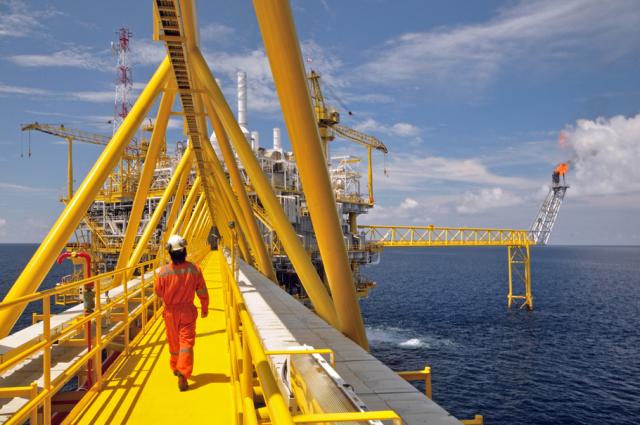
The offshore E&P sector is among the areas expected to see a hiring boost in Brazil. (Source: Shutterstock.com)
RIO DE JANEIRO—The oil and gas industry in Brazil, which is emerging from an economic crisis and recession caused in part by low oil prices and reduced investment by Petrobras, is showing signs of recovery.
Companies from across the world are settling in the country, eyeing opportunities, and some analysis indicates a hiring pickup is around the corner.
A study conducted by the Brazil Development Bank shows roughly 500,000 new jobs are expected to be created in the industry by 2020. Another study carried out by the Federation of Industries of the State of Rio de Janeiro said improved flexibility of local content regulation will help drive several projects, which can bring oil and gas activity and create more jobs.
The E&P sector, in particular, is expected to see a boost considering 44 offshore production systems are scheduled to start operating in Brazil by 2030, according to the federation. “These units will increase the demand for goods and services and generate jobs,” the federation said in a statement.
One of these units will be assembled in the state of Espirito Santo, which is located in the southeast region of Brazil. Assembly of the vessel, which will be operated by Petrobras, is scheduled to start by 2020 and create about 1,000 jobs in Brazil. The hull will be constructed in China.
The city of Macaé, which is the center of Brazil’s offshore oil industry, could offer most of the jobs needed to boost Brazil’s oil output over the next years. Several oil and gas supply chain companies established offices in the city when oil prices were higher, and now many of them are waiting the comeback. These companies have been anticipating the launch in Macaé of three bids for maintenance services for 39 FPSOs in the Campos Basin by Petrobras this year. The Brazilian major is also getting back on track after it was rocked by corruption scandal investigations, collectively known as Operation Car Wash.
The amount of investments required for the FPSOs might reach US$1 billion, which can generate about 3,000 jobs in Macaé, according to studies by the Association of Companies Providing Services for Industry.
For Alessandra Simoes, a headhunter for Uphill Executive Search, a Brazilian consulting firm specializing in helping to fill executive leadership positions, the surge in job openings will be strongly seen starting in 2019.
“I believe there will be a rush for hiring skilled professionals next year not only because of the new acquisitions of assets in the bidding rounds but also because of divestments of Petrobras,” Simoes said. “Companies that are acquiring those assets of [Petrobras] will have to hire a new team of executives and manufacturing and maintenance professionals. They will be needed in seismic activities, shipbuilding services, E&P, logistics and so on.”
Yet, Simoes emphasized that this job market trend will be more selective than it was during Brazil’s last oil and gas boom.
“I am optimistic. But it is important to remember that oil companies learned to do more with less during the crisis,” she continued. “Now, companies will be more strict and hire only highly skilled labor force, and the [application] process might take longer than it used to be in the past.”
New jobs created will not only attract Brazilians but also professionals from other countries. Brazil may face a shortage of domestic skilled labor force, mainly in the engineering area.
Currently, roughly 35,000 engineers graduate from Brazilian universities annually. But the demand for engineers in Brazil is about 60,000 per year, according to the Federal Council of Engineering, Architecture and Agronomy (CONFEA). More than half of the professionals who graduate annually in this field choose to work in the civil engineering segment, according to CONFEA, making it more difficult for the oil, gas and marine industries to fill positions.
Recommended Reading
Baker Hughes Awarded Saudi Pipeline Technology Contract
2024-04-23 - Baker Hughes will supply centrifugal compressors for Saudi Arabia’s new pipeline system, which aims to increase gas distribution across the kingdom and reduce carbon emissions
PrairieSky Adds $6.4MM in Mannville Royalty Interests, Reduces Debt
2024-04-23 - PrairieSky Royalty said the acquisition was funded with excess earnings from the CA$83 million (US$60.75 million) generated from operations.
Equitrans Midstream Announces Quarterly Dividends
2024-04-23 - Equitrans' dividends will be paid on May 15 to all applicable ETRN shareholders of record at the close of business on May 7.
SLB’s ChampionX Acquisition Key to Production Recovery Market
2024-04-21 - During a quarterly earnings call, SLB CEO Olivier Le Peuch highlighted the production recovery market as a key part of the company’s growth strategy.
PHX Minerals’ Borrowing Base Reaffirmed
2024-04-19 - PHX Minerals said the company’s credit facility was extended through Sept. 1, 2028.






